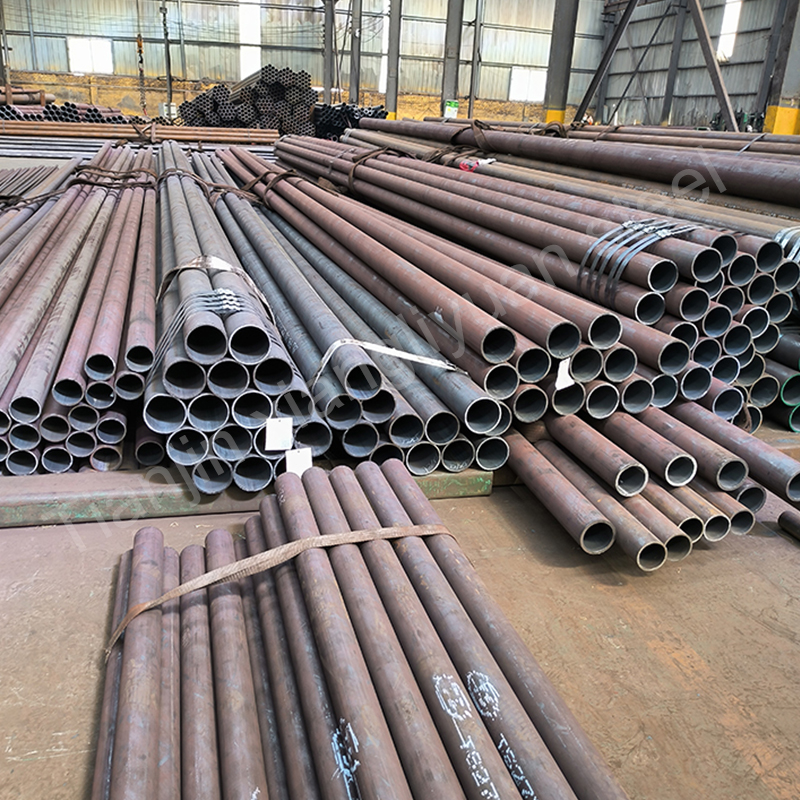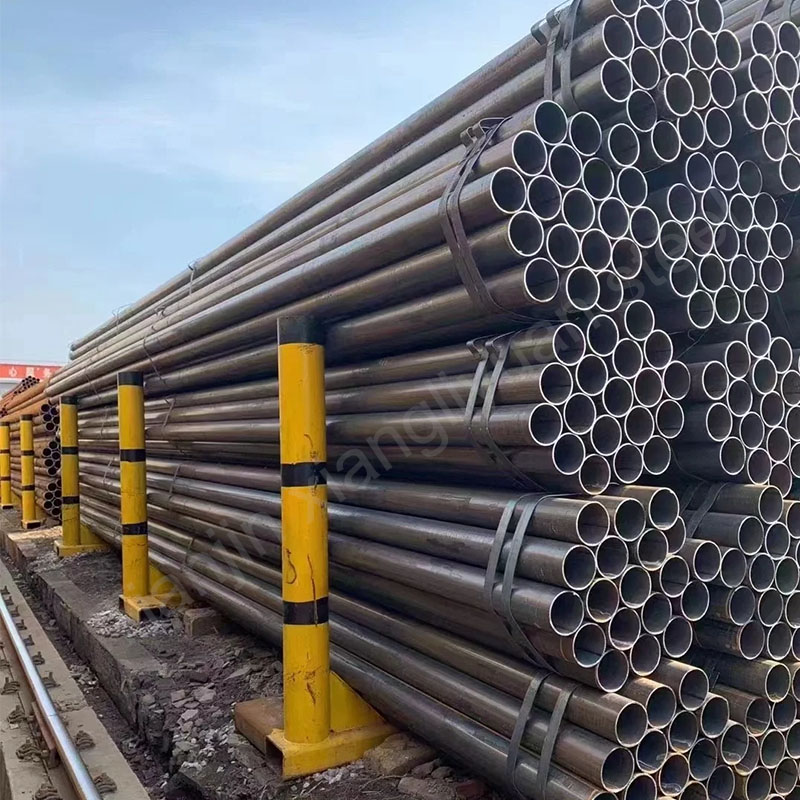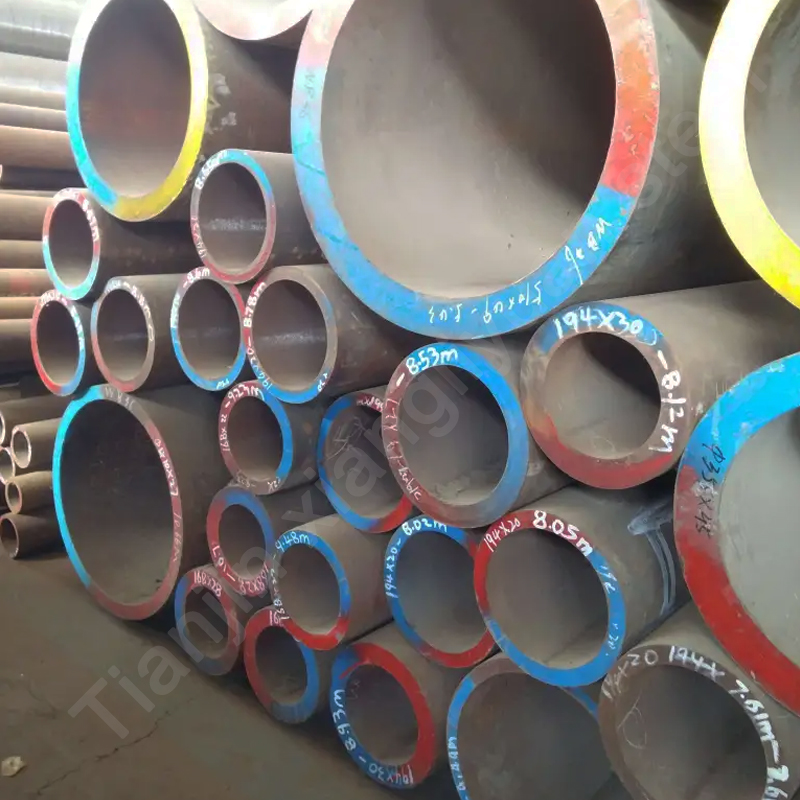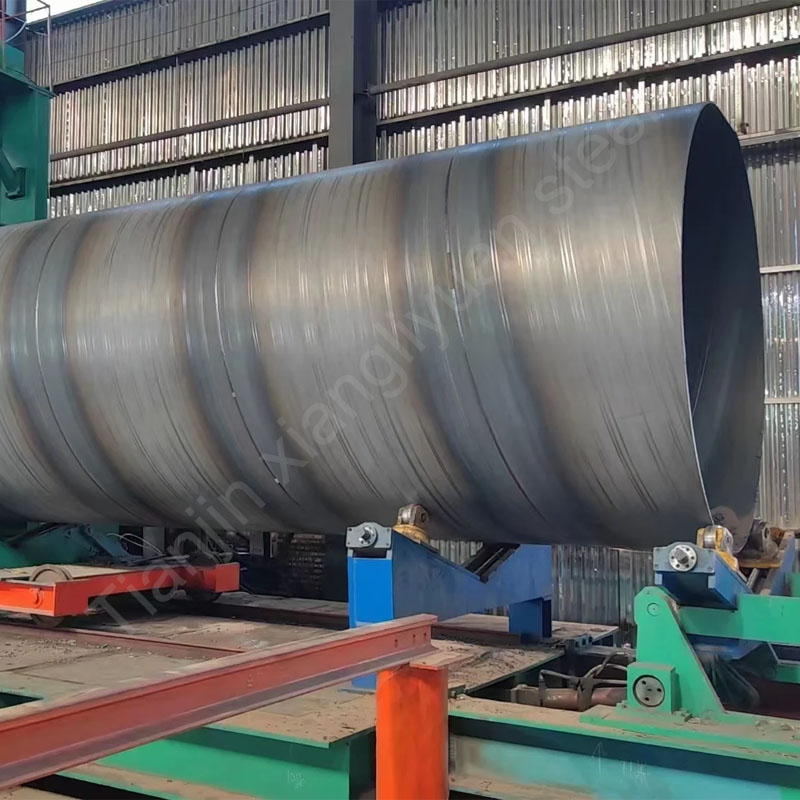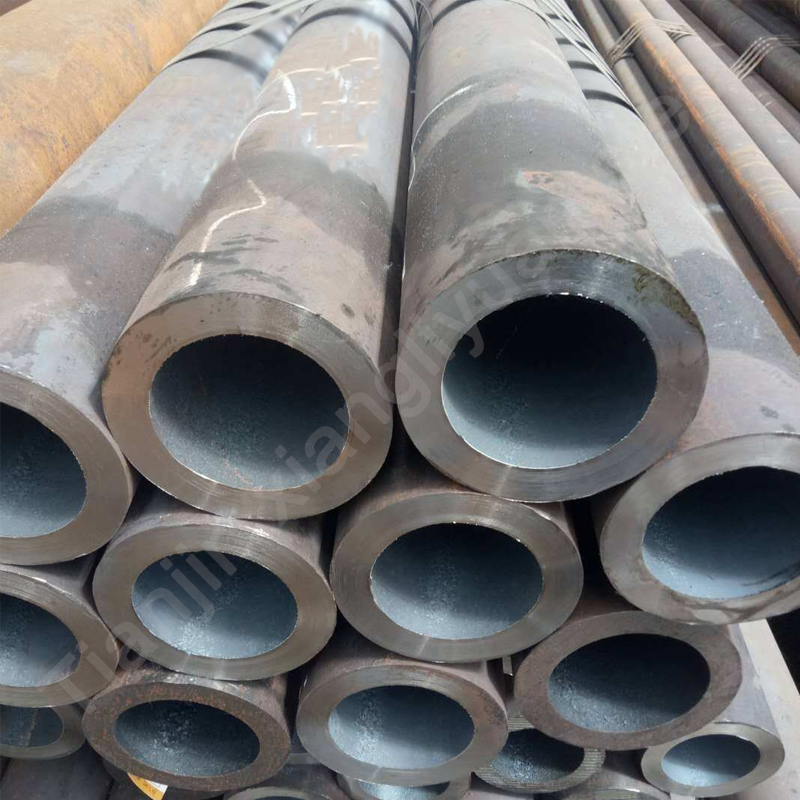Seamless steel pipe and welded steel pipe are two common types of steel pipes, which have significant differences in manufacturing process, performance, application areas, etc.
Seamless steel pipe manufacturing process: Seamless steel pipe is made directly from a whole piece of metal through processes such as hot rolling, cold rolling or cold drawing, without welds.
Strength and pressure resistance: Due to the absence of welds, the overall structure is more uniform, the strength and pressure resistance are higher, and it is suitable for high pressure and high temperature environments.
Surface finish: The inner and outer surfaces of seamless steel pipes have good finish, which is suitable for occasions with high surface quality requirements.
ASTM A106/A53 (American standard)
EN 10210 (European standard)
GB/T 8162 (Chinese standard)
Processing technology:
Hot rolling: The steel billet is heated and rolled into a seamless pipe through a rolling mill.
Cold drawing: The hot rolled pipe is drawn into a seamless pipe with high precision through multiple drawing at room temperature.
Cold rolling: The steel billet is rolled into a thin-walled seamless pipe at room temperature.
Application areas:
Petroleum and natural gas industry: used to transport high-pressure fluids.
Chemical equipment: Pipes used under high temperature and high pressure conditions.
Boilers and heat exchangers: Pipes used for boilers and heat exchangers.
Welded steel pipes
Manufacturing process: Welded steel pipes are made by welding steel plates or steel strips after curling and forming. There are two types: straight seam welded pipes (LSAW) and spiral welded pipes (SSAW).
Low cost: The manufacturing cost of welded steel pipes is relatively low, suitable for large-scale production.
Flexible size: The size of welded steel pipes can be flexibly adjusted according to demand, and the production efficiency is high.
API 5L (American Petroleum Institute Standard)
EN 10217 (European Standard)
GB/T 9711 (Chinese Standard)
Processing technology:
High frequency welding (HFW): The edge of the steel strip is melted by the resistance heat of high-frequency current for welding.
Submerged arc welding (SAW): The welding material and the base material are melted by the heat generated by the arc to form a weld.
Laser welding: Welding is performed using a high-energy laser beam, and the weld quality is high.
Application areas:
Low-pressure fluid transportation: used to transport low-pressure fluids such as water, natural gas, and oil.
Building structures: used for structural materials such as buildings and bridges.
Municipal engineering: used for water supply and drainage pipes.
Seamless steel pipes and welded steel pipes have their own advantages in manufacturing process, performance, and application areas. Seamless steel pipes are suitable for high pressure, high temperature, and high strength occasions, while welded steel pipes are widely used in low pressure fluid transportation and structural materials due to their low manufacturing cost and flexible size. Choosing the right type of steel pipe according to specific needs can effectively improve the safety and economy of the project.

